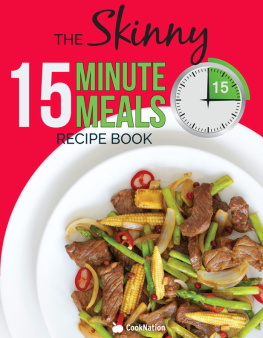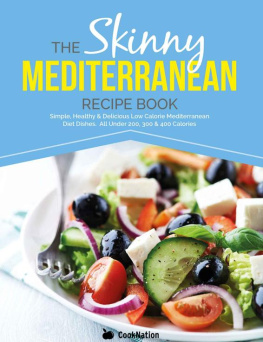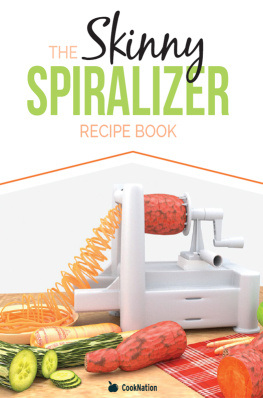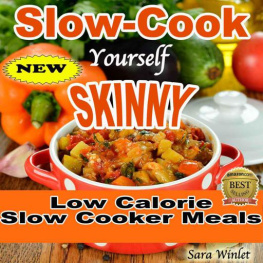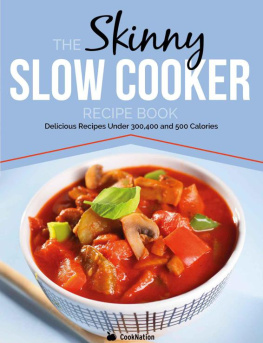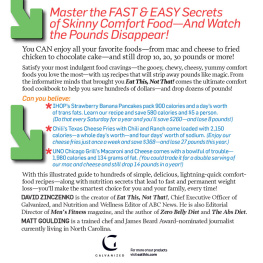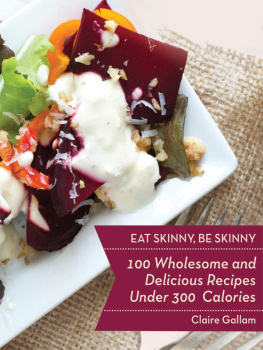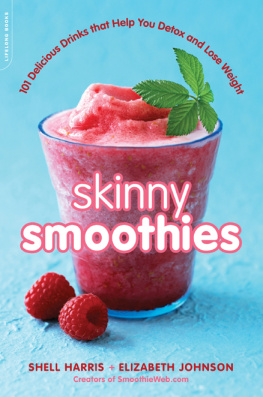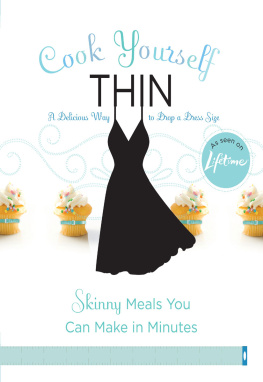Also by Molly Morgan
The Skinny Rules
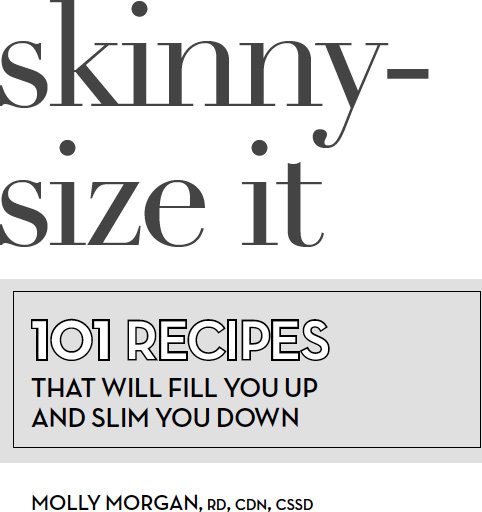
Contents
To my husband and our two little guys, the best supporters.
Acknowledgments
T hank you, thank you, thank you to my husband and our two little guys, who happily tried every recipe in this book because for each recipe that turns out great, there are definitely some that flop in between! Our friends and family are so supportive and have also been taste testers throughout this process and Im forever grateful for their recipe inspiration, input and suggestions!
Lastly, this book would not be a reality without Holly Schmidt from Hollan Publishing or my Harlequin editor, Sarah Pelz. Your ongoing support and encouragement is incredible and made my second Skinny book come to life!
Introduction
L ife has gotten so busy that for many people, meals are primarily purchased and consumed at restaurants and drive-throughs or feature premade foods taken out of bags and boxes at home. Meals eaten out at restaurants are typically higher in fat, including saturated fat, sodium and sugar as compared to what you would make at home. Sometimes restaurant dishes seem like a healthy choice, yet when they arrive at the table, you find that they are swimming in a pool of melted butter or are loaded with salt.
Preparing and eating meals at home gives you control over the quality of the foods you consume and the quantity of fat, sugar and salt added. In addition, when you cook, you burn calories: approximately thirty minutes of cooking translates into ninety calories burned, and the cleanup burns another fifty calories, for a total of 140 calories burned (based on a 150-pound person). By preparing just three meals per week and doing the cleanup, you could burn 21,840 calories a year, which equals six pounds worth of calories. And if you prepared Skinny-Size It recipescreating healthier alternatives by skipping and swapping out high-fat, high-calorie ingredients and avoiding certain cooking methodsyou would consume fewer calories.
After writing The Skinny Rules, I was so excited to write Skinny-Size It, because eating healthy can taste great and you can make meals that fill your plate! This book is not about cutting down portion sizes to keep calories in check. Rather the recipes in Skinny-Size It call for plenty of fruits, vegetables, whole grains, beans and spices to maximize portion sizes while focusing on flavor from aromatic vegetables, herbs and spices, allowing you to enjoy a full plate of food for a much lower calorie price tag. I am always on the lookout for recipe ideas: I snap pictures of dishes I find appealing, and I read recipes in cooking magazines. Then I head to the grocery store for the ingredients, return to our kitchen and re-create the recipes in a way that makes them as healthy as can be.
You may notice there are a lot of vegetarian and vegan recipes throughout this book. While I have always worked a lot of fruits, vegetables, whole grains, nuts and seeds into my eating routine, for over a year I have gone mostly meatless and have limited the amount of processed foods, high-fat dairy foods and eggs in my eating routine. Why did I revise my eating plan in this way? Research has proven the health benefits of a plant-based diet: weigh less and have a reduced risk for certain types of cancer, heart disease and diabetes. In general, Americans overdo protein and animal foods, consuming too much. Have you ever stopped to consider that nearly every dish on most restaurant menus (and perhaps even your own home dishes) contains either meat, eggs, cheese or other dairy products, and some even feature a combination of all four? Never eating meat, eggs, cheese or other dairy products may not be right for you. However, eating more minimally processed fruits, vegetables, whole grains, nuts and seeds would certainly be beneficial for everyone, since most people do not eat enough of these foods. Every recipe in Skinny-Size It incorporates them.
Perhaps you were wondering why there are no dessert recipes in this book. The reason I decided to exclude dessert recipes is that while removing a few grams of fat or adding a bit of fiber to a dessert recipe certainly would health it up, at the end of the day, it would still be a dessert. I figured that my energy was best spent on developing recipes that could serve as more of a foundation for eating routines, rather than just as icing on the cake. If youre really craving something sweet at the end of your meals, this book offers a few delicious and satisfying options, such as Baked Apple Pie Parfaits and Apple Cinnamon Chia Swirl Pudding, both in the Snacks and Appetizers chapter.
It is always important to keep the bottom line in mind when it comes to meals: food is fuel. Would you put a type of gas in your car that would stop it from working efficiently? Probably not. Think of foods as fuel for your body, and consider that the right mix certainly can help you to feel and look your best. Last but not least, incorporating the fresh flavors of fruits, vegetables, whole grains, nuts and seeds, and spices and herbs can make healthy recipes taste great. So with that in mind, what are you going to cook today?
Stocking Your Skinny Kitchen
Having a supply of certain ingredients and tools on hand makes it much easier to pull together Skinny meals. Check your cupboards to see which of the ingredients listed here you keep on hand and which ones you need to add to your shopping list.
Fresh herbs and spices
Fresh herbs, like dill and parsley, are too delicate to stock up on in large quantities. On the other hand, fresh gingerroot, a spice that is a necessity when it comes to Skinny cooking, is hearty and holds up well when stored in the refrigerator. If you like having plants, try keeping potted herbs that you use routinely in cooking, such as basil, mint, oregano, parsley and rosemary. I like to keep at least one fresh herb (a favorite is rosemary) plant growing in our kitchen year round, and seasonally we grow the other herbs in the garden. I have to say that herbs are relatively simple to grow. Two that I especially like to keep on hand during the summer months are mint and basil.
Aromatic vegetables
The foundation of flavor in many Skinny-Size It recipes comes from aromatic vegetables including garlic, onions, peppers and celery. These vegetables are full of flavor and deliver vitamins and minerals like vitamin C, folate, manganese, potassium and vitamin A. Consider aromatic vegetables like these staples of Skinny cooking!
Vinegars
To add great flavor to sauces and dressings, keep a variety of vinegars in your pantry, including balsamic vinegar, white balsamic vinegar, red wine vinegar, white wine vinegar and rice vinegar.
Oils
The quality of oil varies, and you definitely get what you pay for. For example, extra-virgin olive oil is more expensive than other olive oil versions because it comes from the first press of the olives and is the most nutrient rich and has a rich olive flavor! In comparison, light olive oil is a more processed oil that is lighter in flavor (but has the same amount of calories and fat). In addition, oils have different smoke points (the maximum temperature to which they can be heated before they break down) and flavor profiles.
The best oils for baking, oven cooking and stir-frying are canola oil, grapeseed oil, extra-virgin olive oil and peanut oil. The best oils for light sauting, for making sauces and for cooking over low heat are sesame oil, sunflower oil, walnut oil and coconut oil. Keep on hand oils that are suitable for all these tasks. If I were to pick my top two favorite oils, they would be extra-virgin olive oil and sesame oil.
Next page


